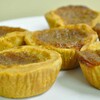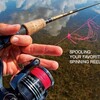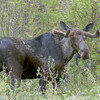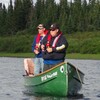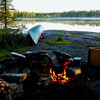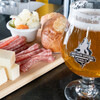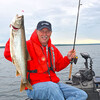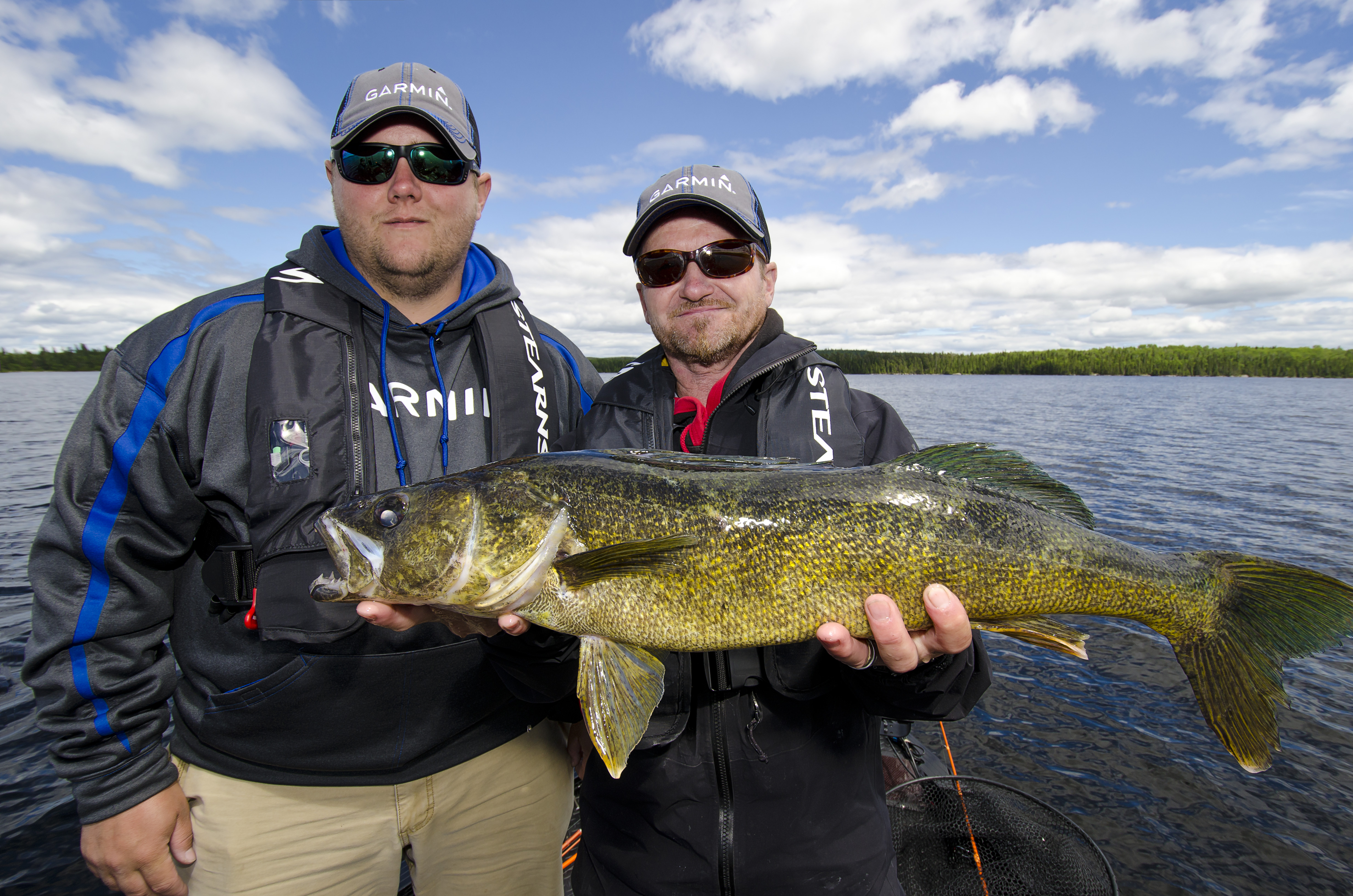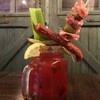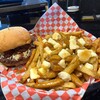
Master the Campfire Fish Fry
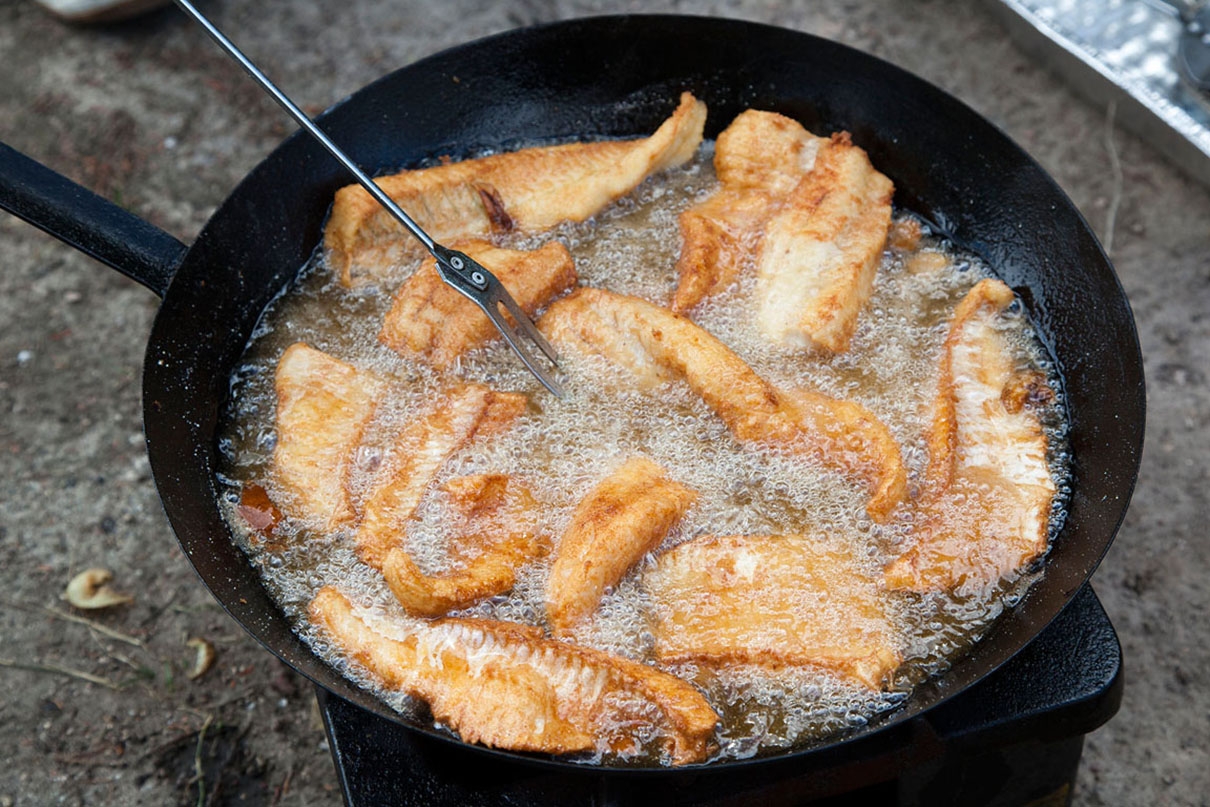
Anglers heading north to Ontario's Algoma Country have lots of reasons for wetting a line. Sport, fellowship, adventure and bragging rights are just some of the good reasons to plan a fishing trip in Algoma Country.
Just as important as catching fish, the always popular "fish fry" has motivated countless anglers to keep a few for the table.
The Grease
Not all cooking oils are ideal for frying fish. The best options are vegetable oils that have an exceptionally high flash point, or what some cooks call a "smoke point". The smoke point of cooking oil is the temperature at which the grease starts to vaporize and is in jeopardy of bursting into flames. This temperature varies from 360° to about 510° depending on the oil in question.
Safflower, peanut and corn oil are among the best options for frying fish because these oils all have a very high flash point. Oils to be avoided for frying include butter, margarine, olive oil and believe it or not lard or animal fat. The ideal frying temperature for fish is about 375° and the best way to maintain this temperature is with the help of a grease thermometer, available anywhere cooking supplies are sold.
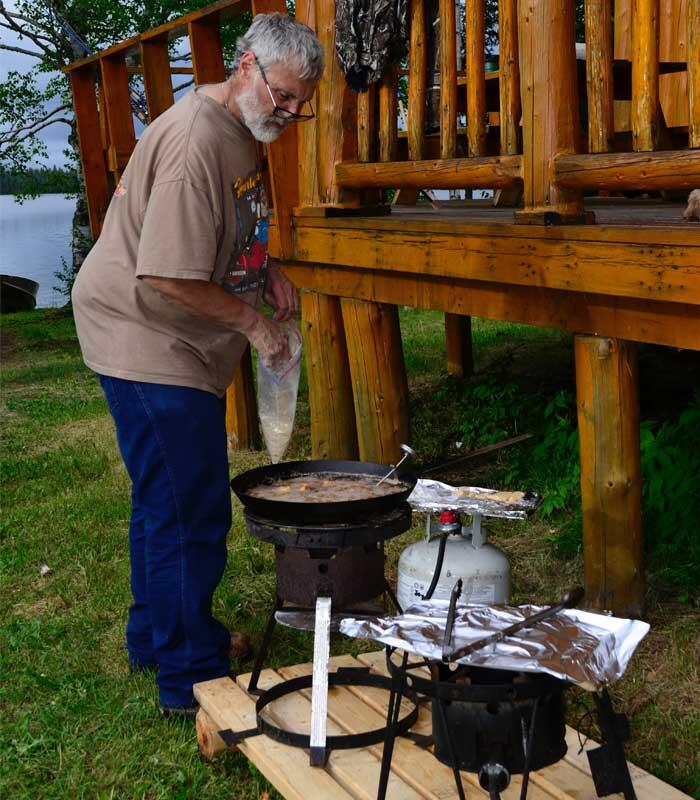
Cast Iron
A cast-iron pot isn't the only way to fry fish, but it most certainly is one of the best options. Cast iron transfers heat better than other frying pan types, eliminating hot and cold spots in the grease. This goes double when frying over an open fire as a heat source.
Breading Options
The options for fish breading are almost endless, and it seems everyone has their favourite commercially produced or homemade breading mix. Seasoned cracker crumbs, bread crumbs, wheat flour and cornflour are among the most common fish coatings. Bread, crackers, and wheat flour yield a softer batter, and cornflour yields a crunchy batter when fried.
Double Dry Breading
Some would argue that it's the breading that gives most fish flavour. It's true that popular species like walleye are so mild in flavour that a little extra attention to how the breading is seasoned makes sense. Some even go so far as to bread the pieces of fish not once, but twice.
Double breading gives the pieces of fried fish a little extra flavour. To double bread, simply roll moist pieces of fish in a favourite dry breading and set the pieces on a cookie sheet. Set the breaded fish aside for a few minutes until the breading starts to get sticky, then roll the pieces of fish a second time in the dry breading mix.
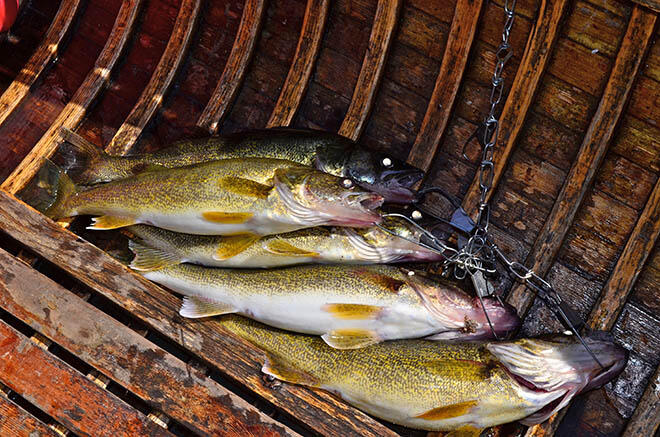
Beer Batter Breading
A "beer batter" breading also gives fried fish a more pronounced coating and flavour. One of the most popular options is to take a commercially produced dry coating mix like "Drakes" and mix it with a little beer to create a batter with about the same consistency as pancake batter. A standard package of Drake's breading mixes up perfectly with one 12-ounce can of beer. How perfect is that?
When using a beer batter breading, it's important that the fish fillets be perfectly dry before they are dunked into the "beer batter". If the fillet is wet, the batter won't stick well to the fish.
Other Wet Batter Options
Beer batter is great, but there are other popular wet batter options for frying fish. A mixture of raw egg and milk whipped together makes an ideal dipping solution. Simply drop the pieces of fish into the egg and milk mixture and then roll the fish in a dry batter mix.

Seasoning Options
No matter if your batter is wet, dry, homemade, or a commercially produced product, chances are the batter is going to need some help in the seasoning department. Some commercial batter mixes are already heavily seasoned, so read the package and tread lightly here if the package indicates lots of seasonings are included. Homemade batter mixes are going to require a generous amount of salt, coarse ground pepper and lemon pepper to bring out the full flavour of the fish.
Is It Done Yet?
When the fillets hit the hot grease, they should start bubbling aggressively. When the bubbling starts to ease and the fillets float to the top, the fish is cooked and ready to serve.
Extra Special Touches
A couple of ways to add an extra special touch to any fish fry are to drop a spoonful of butter into the grease when the fillets are almost completely cooked. The melting butter will impart a nice flavour to the fillets and brown them up perfectly.
Also, when the fillets are cooked, drain them over the grease for a couple of minutes and then dunk them back into the hot grease for about 30 seconds to a minute. This second dunking will help the fillets firm up and come out with a nice golden brown colour.
Summing It Up
Fried fish is always a treat, but fish never tastes better than when it is freshly caught, cooked on location and eaten with friends and family. This season, take time to master the "fish fry" and share the wealth with those you care most about.
Recommended Articles

The Group of Seven in Algoma

9 Facts to Know about the Agawa Canyon Tour Train






